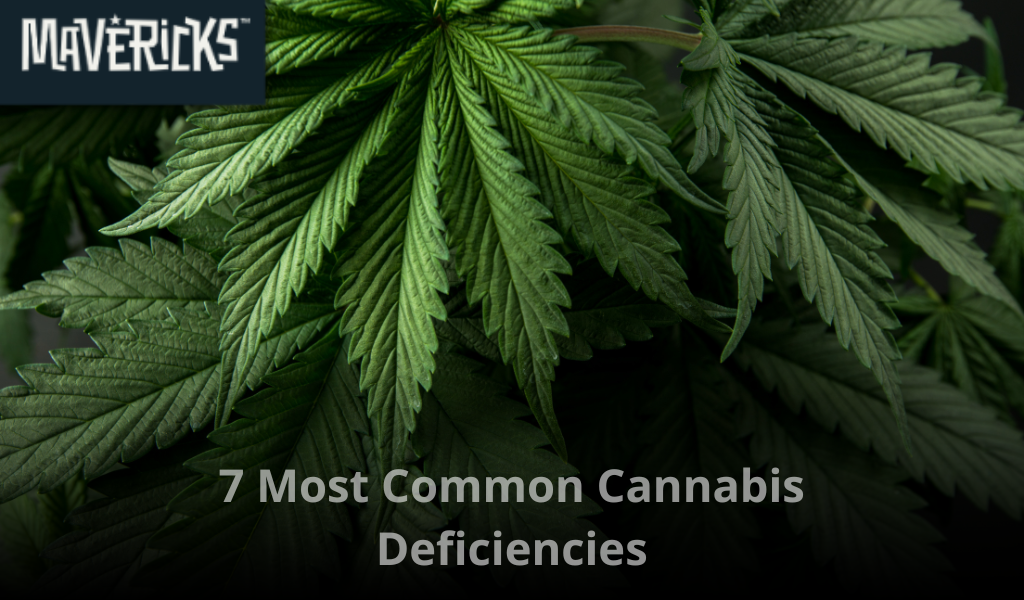Cannabis plants are hungry for nutrients—but not just any nutrients, and not at every stage. When something goes wrong in the feeding process, your plants will show it—often with strange leaf colors, curling, spotting, or slowed growth. Learning to spot nutrient deficiencies early is key to saving your grow and unlocking the full genetic potential of your plants.
In this guide, we’ll walk you through the most common cannabis deficiencies, how to recognize their symptoms, what causes them, and how to correct them quickly. Whether you’re feeding a tent full of autos or growing elite genetics from Mavericks Genetics USA, diagnosing deficiencies is a must-have grower skill.
Why nutrient deficiencies happen in cannabis
Cannabis nutrient deficiencies aren’t always due to underfeeding. Often, they’re caused by:
-
pH imbalances blocking nutrient uptake
-
Overwatering or underwatering
-
Poor soil quality or depleted coco/hydro nutrients
-
Root damage or pests
-
Nutrient lockout from salt buildup
That’s why the first step in fixing a deficiency is testing your pH and reviewing your feeding schedule.
1. Nitrogen (N) Deficiency
Symptoms:
-
Yellowing of lower, older leaves
-
Leaves drop off if untreated
-
Pale overall plant color and weak growth
When it happens:
Early to mid-veg stage
Fix:
-
Increase nitrogen-rich nutrients (especially during veg)
-
Check runoff pH: should be 6.0–6.5 in soil, 5.5–6.1 in hydro
-
Don’t overcorrect—excess nitrogen can lead to toxicity
2. Phosphorus (P) Deficiency
Symptoms:
-
Dark green or purplish leaves
-
Stunted growth, weak stems
-
Red or purple stems
-
Bud development stalls in flowering
When it happens:
Late veg or early flowering
Fix:
-
Use a bloom booster with high P
-
Flush and reset nutrient levels if pH is too low
-
Ideal pH: 6.2–6.5 in soil, 5.8–6.2 in hydro
3. Potassium (K) Deficiency
Symptoms:
-
Leaf tips burn and curl
-
Yellow or brown spots on older leaves
-
Buds appear small and underdeveloped
When it happens:
Early to mid-flowering
Fix:
-
Supplement with potassium-heavy bloom nutrients
-
Check pH: below 6.0 can lock out potassium
-
Consider using kelp or seaweed extracts
4. Calcium (Ca) Deficiency
Symptoms:
-
Brown spots on leaves
-
Crispy edges or distorted growth
-
Slow root development
When it happens:
Throughout the grow, especially with RO or soft water
Fix:
-
Add Cal-Mag supplement
-
Maintain pH: 6.2–6.5 in soil
-
Avoid overwatering—damp soil affects Ca uptake
5. Magnesium (Mg) Deficiency
Symptoms:
-
Interveinal chlorosis (yellowing between veins)
-
Affects lower leaves first
-
Leaf edges curl upward
When it happens:
Veg into early flowering
Fix:
-
Add Epsom salts (1 tsp/gal) or a Cal-Mag product
-
Raise pH slightly if too acidic
-
Be patient—Mg takes a few days to show results
6. Iron (Fe) Deficiency
Symptoms:
-
New leaves turn pale yellow or white
-
Veins remain green
-
Stems may become thin and brittle
When it happens:
Usually during early veg or after transplant
Fix:
-
Iron chelates (Fe-EDDHA) are effective
-
Adjust pH to 6.0–6.2 for better uptake
-
Avoid cold root temps and overwatering
7. Zinc (Zn) Deficiency
Symptoms:
-
Leaf tips discolored or deformed
-
New growth is small and thin
-
Interveinal yellowing at leaf tips
When it happens:
Mostly in early veg and early flower
Fix:
-
Apply micronutrient supplement with zinc
-
Maintain optimal pH
-
Avoid overwatering and compaction around roots
Deficiency chart for quick reference
|
Deficiency |
Symptoms |
Fix |
|
Nitrogen |
Yellow lower leaves |
Boost N, check pH |
|
Phosphorus |
Purple stems, stunted growth |
Add bloom booster |
|
Potassium |
Leaf tip burn, brown spots |
Supplement K, adjust pH |
|
Calcium |
Brown spots, crispy edges |
Add Cal-Mag |
|
Magnesium |
Yellowing between veins |
Add Epsom salt |
|
Iron |
Pale new growth |
Use chelates, raise pH |
|
Zinc |
Deformed tips, small leaves |
Apply micronutrients |
How to prevent cannabis deficiencies
-
Use high-quality, balanced nutrients made for cannabis
-
Check pH regularly (especially runoff)
-
Don’t overfeed or overwater
-
Keep a grow journal with feeding schedules
-
Flush with clean water between feedings to prevent salt buildup
Pro tip: The better your genetics, the better your plant’s resilience. At Mavericks Genetics USA, our feminized seeds are bred for strength, structure, and nutrient uptake—helping you avoid problems before they start.
Know your leaves, save your harvest
Most cannabis deficiencies start with subtle changes in the leaves. By catching the signs early and understanding what each nutrient does, you can correct issues quickly and protect your yield.
Whether you’re growing in soil, coco, or hydro, healthy plants start with balanced nutrition and smart monitoring.
Looking for seeds that thrive in tough conditions?
Explore Mavericks Genetics USA for high-performance strains bred to deliver results, even when the grow gets tough.

Share:
Cannabis Flowering Stages: Week-by-Week Guide to Bud Development
10 Best Marijuana Seeds for Beginners (Available at Mavericks Genetics USA)